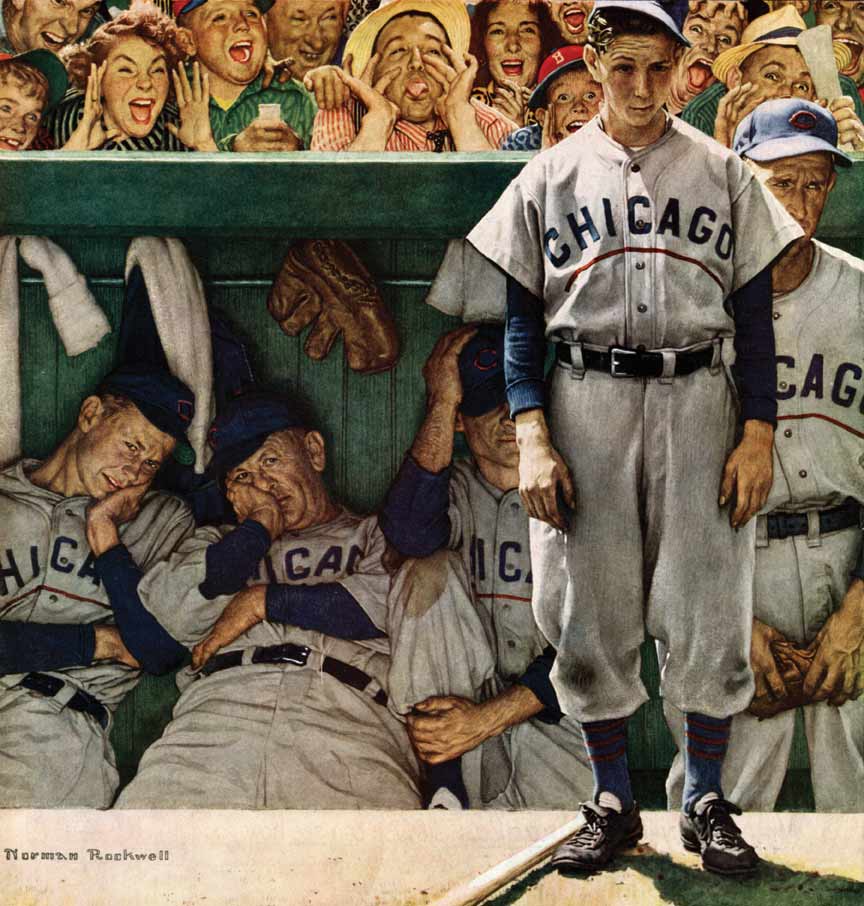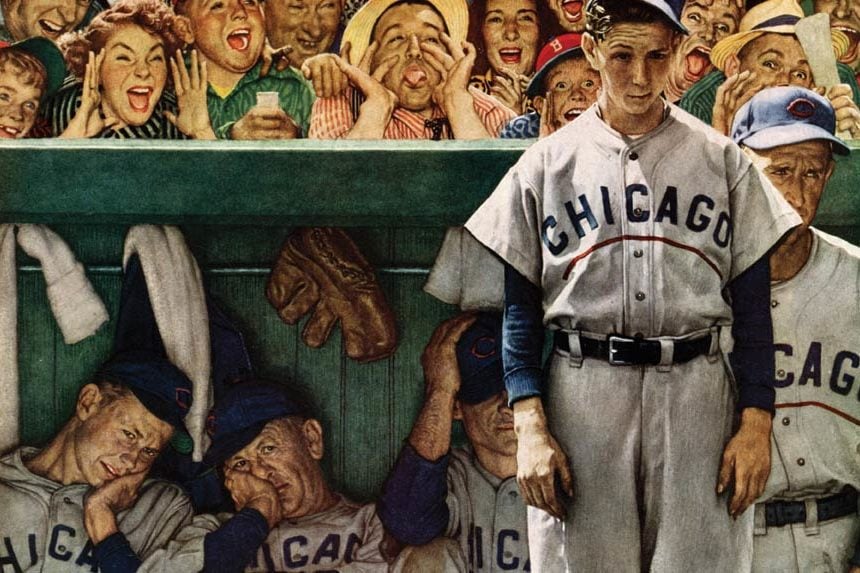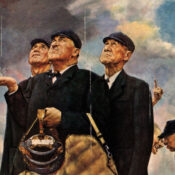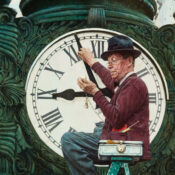In 1948, the Chicago Cubs were having a bad season. Their long string of losses provided Norman Rockwell an opportunity to contrast a visiting team’s dejection with the raucous elation of home-team fans of the then-Boston Braves.
Several Cubs good-naturedly agreed to model for him. Rockwell captured them early on May 23 in Boston before the start of a doubleheader. From left to right, they are pitcher Bob Rush, manager Charley Grimm, and, behind the batboy, catcher Al Walker and alternate pitcher Johnny Schmitz.
Later, as the stands started to fill, Rockwell stood in the infield and pointed out people he wanted for models. These fans were invited to sit in a box over the dugout and pose. All were happy to be part of the painting. Rockwell would ask each one to mimic his expression of delight or scorn, but some fans just couldn’t project the right intensity. Others found it easy to portray raucous delight and loud derision, like the girl delightedly razzing the Cubs at left. She was the daughter of the Braves’ coach. The woman gripping her hands delightedly over the batboy’s right shoulder was the wife of the Braves’ pitcher. And to add one more screaming face to the frame, Rockwell put himself in the upper left. When he was finished photographing the faces he wanted to use in the illustration, the game began. And life imitated art, for that day the Chicago Cubs lost both games.

This article appears in the November/December 2018 issue of The Saturday Evening Post. Subscribe to the magazine for more art, inspiring stories, fiction, humor, and features from our archives.
Become a Saturday Evening Post member and enjoy unlimited access. Subscribe now




Comments
I have that paint for sale